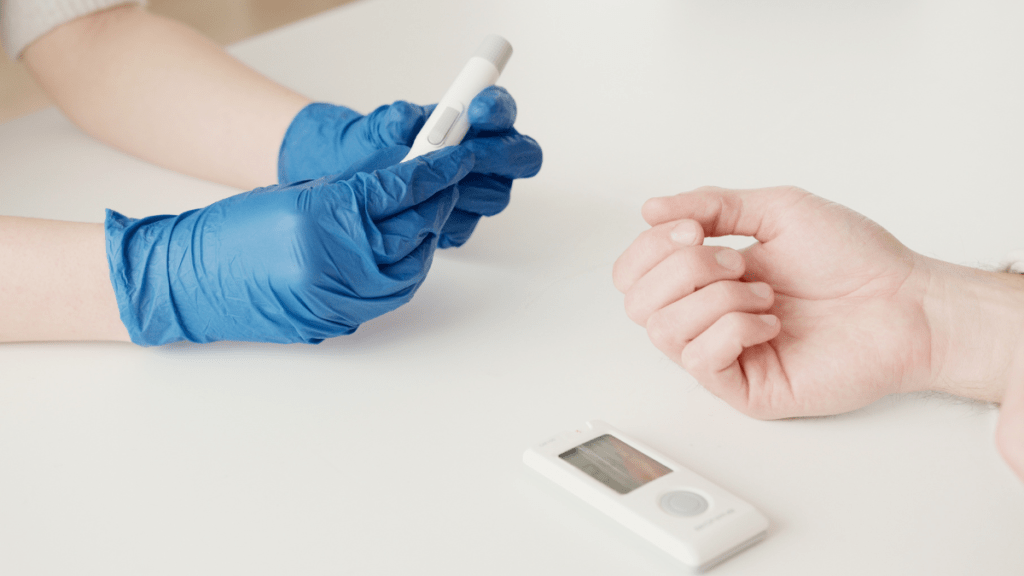Diabetes mellitus is a prevalent disorder affecting millions worldwide. This chronic condition disrupts the body’s ability to regulate blood sugar levels, leading to a range of health complications. In this article, we’ll search into the intricacies of diabetes mellitus, its types, causes, symptoms, and management.
Table of Contents
Introduction to Diabetes Mellitus
Diabetes mellitus is characterized by the body’s inability to produce sufficient insulin or effectively respond to it, causing elevated blood sugar (glucose) levels. This condition is marked by increased urination, excessive thirst, and unexplained weight loss. Diabetes not only affects metabolism but also impacts various organs and systems.
Understanding Blood Sugar Regulation
Glucose is a vital energy source derived from carbohydrates in our diet. The body relies on insulin, a hormone produced by the pancreas, to facilitate glucose uptake into cells. When this process is disrupted, as seen in diabetes, complications arise.
Types of Diabetes Mellitus
Type 1 Diabetes
Diabetes Type 1 is an autoimmune disorder in which the body’s immune system mistakenly attacks and destroys the insulin-producing beta cells in the pancreas. This critical hormone, insulin, is responsible for regulating blood sugar levels. As a result of this attack, individuals with Type 1 diabetes face a perpetual struggle to maintain their blood sugar levels within a healthy range.
Type 2 Diabetes
Type 2 diabetes is a chronic medical condition characterized by elevated blood sugar levels due to the body’s impaired ability to utilize insulin effectively. Insulin, a hormone produced by the pancreas, regulates glucose uptake by cells. In type 2 diabetes, either the body doesn’t produce enough insulin or the cells become resistant to its effects, leading to increased blood sugar levels.
Gestational Diabetes
Gestational diabetes emerges during pregnancy and usually resolves after childbirth. However, it increases the risk of type 2 diabetes in the future.
Other Types
Less common types include Type 3c, Latent Autoimmune Diabetes in Adults (LADA), MODY, and Neonatal Diabetes. These forms result from distinct genetic or environmental factors.
Causes of Diabetes Mellitus
While the exact causes of diabetes mellitus vary among types, factors like genetics, family history, and certain environmental triggers play roles in their development.

Symptoms and Diagnosis
Symptoms of diabetes include increased thirst, frequent urination, unexplained weight loss, fatigue, blurred vision, and more. Various blood tests, including the A1C test and fasting blood sugar test, aid in diagnosis.
Impact on Health
Diabetes can cause nerve damage affecting touch sensation, increase the risk of cardiovascular diseases, chronic kidney disease, and lead to vision problems.
Diagnosing Diabetes
Accurate diagnosis involves blood sugar tests, C-peptide tests, and antibody tests, distinguishing between type 1 and type 2 diabetes.
Treatment Approaches
Insulin therapy, monitoring carbohydrate intake, adopting a healthy lifestyle, and advancements like continuous glucose monitoring and insulin pumps form the foundation of diabetes management.
Read More: Eye Flu: Causes, Symptoms, and Prevention
Prevention and Risk Reduction
Maintaining a healthy weight, staying active, regular exercise, stress management, monitoring blood sugar and making informed dietary choices can reduce the risk of diabetes.
Prediabetes: A Warning Sign
Prediabetes indicates elevated blood sugar levels that aren’t yet classified as diabetes. Lifestyle changes can prevent its progression.
Genetic and Environmental Factors
Genetics and environmental factors such as geography and age influence diabetes susceptibility.
Living with Diabetes
Adopting coping strategies, following a balanced diet, engaging in regular exercise, and embracing technological innovations can help individuals manage diabetes effectively.
Conclusion
Diabetes mellitus is a complex disorder with far-reaching effects on health and well-being. Understanding its various types, causes, symptoms, and treatment options empowers individuals to make informed choices to live a fulfilling life despite the challenges posed by the condition.
FAQs
- Can diabetes be prevented?
- While some risk factors are beyond control, maintaining a healthy lifestyle can significantly reduce the risk of developing diabetes.
- What is the role of insulin in diabetes management?
- Insulin therapy is essential for those with type 1 diabetes and may be necessary for type 2 diabetes when other approaches aren’t sufficient.
- How does prediabetes differ from diabetes?
- Prediabetes indicates elevated blood sugar levels but not to the extent of diabetes. Lifestyle changes can prevent its progression.
- Are there genetic factors that contribute to diabetes?
- Yes, genetics play a role in diabetes susceptibility, particularly in types like MODY and LADA.
- How has technology advanced diabetes management?
- Innovations like continuous glucose monitoring and insulin pumps provide real-time data and more precise insulin delivery, enhancing diabetes management.
- What is the normal range of Diabetes Mellitus?
- According to the WHO values for normal fasting blood glucose concentration are between 70 mg/dL (3.9 mmol/L) and 100 mg/dL (5.6 mmol/L). When fasting blood glucose is between 100 to 125 mg/dL (5.6 to 6.9 mmol/L)
Want to know more? Visit WHO official website





